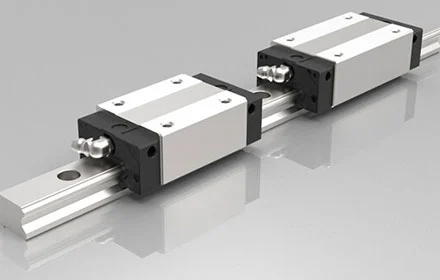Linear motion guides are integral components in various applications, providing precise and reliable movement in industries such as manufacturing, automation, and robotics. To ensure the long-term performance and efficiency of your system, proper maintenance is essential. In this blog, we will discuss the importance of maintaining your linear motion guides and offer tips on how to extend their lifespan.
Linear motion guides play a vital role in industrial systems, facilitating controlled and frictionless linear movement. They are commonly found in applications that demand accuracy and consistency, such as CNC machining, 3D printing, and quality control systems. Failing to maintain these guides can result in reduced precision, increased downtime, and costly repairs.
Before diving into maintenance, it's essential to understand the potential issues that can arise with linear motion guides. Common problems include:
Lubrication Breakdown: Over time, lubrication can break down, leading to increased friction, wear, and decreased performance.
Contamination: Dust, debris, and other contaminants can infiltrate the guide system, causing damage to the bearings and rails.
Misalignment: Misalignment of the guide rails can result in uneven wear and reduced accuracy.
Corrosion: Exposure to harsh environments can lead to corrosion, impacting the structural integrity of the guide system.
Backlash: Accumulated backlash can reduce precision and result in uneven movements.
Recognizing the signs of wear and addressing issues promptly can prevent more severe damage and extend the lifespan of your linear motion guides.
Proper maintenance is the key to ensuring your linear motion guides continue to function optimally. Here are some best practices to consider:
Regular Cleaning: Keep the guide system clean by removing dust and debris. Use non-abrasive materials and appropriate cleaning solutions.
Lubrication: Follow the manufacturer's guidelines for lubrication intervals and use the recommended lubricants. Ensure even distribution of lubrication to reduce friction and wear.
Alignment and Inspection: Periodically check for misalignment and wear. Correct any issues found and ensure that the guide system is operating as intended.
Seal and Protect: Use protective covers or bellows to shield the guide system from contaminants and environmental factors.
Replace Worn Components: When you notice significant wear or damage, replace worn bearings, rails, or other components according to the manufacturer's recommendations.
Investing time and effort in maintaining your linear motion guides can yield numerous benefits:
Extended Lifespan: Regular maintenance can significantly extend the lifespan of your guide system, reducing the frequency of costly replacements.
Improved Performance: Properly maintained guides ensure continued precision and accuracy, contributing to consistent and high-quality results in your applications.
Reduced Downtime: Minimized downtime for maintenance and repairs leads to increased productivity and decreased production interruptions.
Cost Savings: Preventative maintenance is generally more cost-effective than addressing major issues or replacements.
In conclusion, the maintenance of linear motion guides is a critical aspect of ensuring the longevity and efficiency of your industrial systems. By recognizing common issues, following best practices, and committing to regular maintenance, you can extend the lifespan of your linear motion guides and maximize their performance. This proactive approach will not only save you time and money but also help maintain the precision and reliability that your applications require.

![CSK Motion [Exhibition Scene] - CSEAC 2024 12th Semiconductor Equipment and Core Components Exhibition CSK Motion [Exhibition Scene] - CSEAC 2024 12th Semiconductor Equipment and Core Components Exhibition](/uploads/image/20230711/10/selection-of-lubricating-oil-and-viscosity-of-linear-slide-rails_1689041392.webp)
